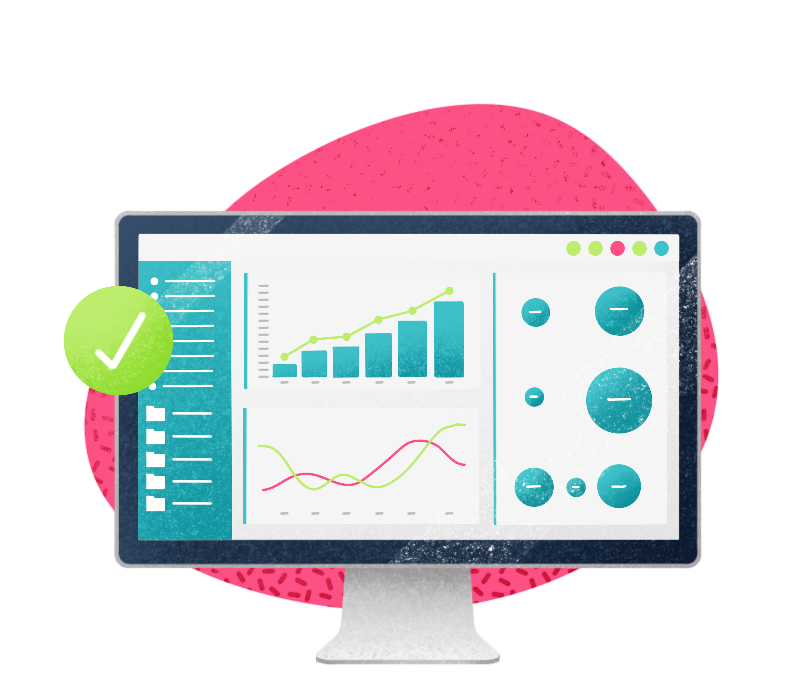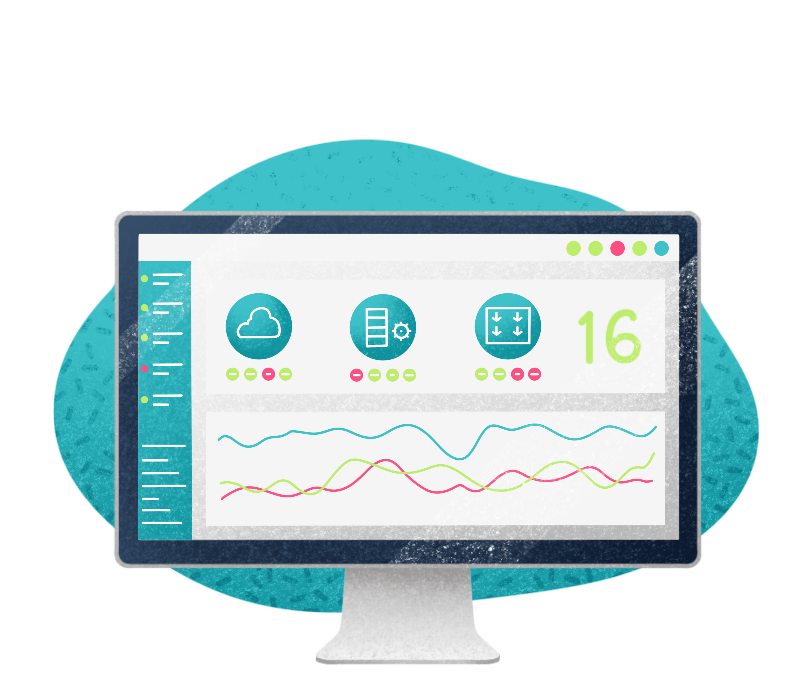Introduction
Let’s start with a very common scenario. You’re at work, in your company, and you need IT support: for example, you need first-time access to a new application, or you have to report a problem with company software, or maybe you want to request an upgrade for your work device. Without a clear and well-organized system, every request would turn into a complicated route of emails, phone calls, and indefinite waiting times… at the expense of your mood and productivity.
That’s why, in a modern company, IT services must be well-structured and readily accessible.
An IT Service Catalog is the perfect solution to bring order to this often very complex and branching ecosystem.
But be careful! We’re not talking about just a list of available services, but rather a true strategic guide to improving efficiency, transparency, and communication between the IT department and the rest of the organization.
In the following sections of this article, we’ll focus on exactly this.
We’ll begin with definitions and examine the essential requirements for a functional and efficient IT Service Catalog. We’ll then move on to best practices for its implementation. Finally, we’ll see why EasyVista’s tools and solutions can be so useful and valuable in this field.
IT Service Catalog – Definition, Importance, Operation
As we’ve already emphasized: an IT Service Catalog isn’t just a simple list of services. Through a good IT Service Catalog, users should be able to identify the available services in a simple, intuitive way, understand how to access them and how quickly, and be able to act quickly to get what they need.
The result?
An overall improvement in the experience of using IT services… which in turn translates into greater workplace satisfaction, with all the positive effects in terms of employee retention, but also—and above all—enhanced quality of service provided to external customers.
In short, a win-win dynamic.
Now, concretely, which IT services can and should be included in a catalog?
Let’s look at some examples, choosing from among the most common:
- Technical support: the basic level. Effective support for quickly resolving any hardware and software issues, from simple password resets or email configuration to more complex matters that may require proper escalation.
- Access management. Here, too, we’re talking about everyday matters, such as requesting authorization for corporate applications, VPN, or collaboration tools. Even small inefficiencies in these areas can easily add up, creating bottlenecks that clog the company’s entire workflow.
- Provisioning of new devices, such as requests for laptops, company smartphones, additional monitors, and so on.
- Software and licenses: access to productivity suites and specialized software, with the utmost attention to the delicate issue of license management.
- Cloud services, such as access to databases, hosting applications, provisioning of virtual machines… and the list could go on for quite a while.
- IT security. Speaking of sensitive topics, here’s another crucial point. An IT Service Catalog must handle the reporting of threats and attack attempts, requests for secure VPNs, activation of multi-factor authentication, and everything related to cybersecurity. Note: this is a constantly evolving field, and therefore requires continual updates.
Context and Importance of the IT Service Catalog
The IT Service Catalog originally emerged as an integral part of the ITIL (Information Technology Infrastructure Library) framework, a set of best practices for managing IT services, which we covered extensively in this article.
ITIL revolutionized IT management by introducing a structured approach based on well-defined processes that are continuously updated. The IT Service Catalog couldn’t be anything but central to this type of framework because, as we’ve seen, it reduces chaos in IT requests, ensures maximum transparency in the delivery of services, and improves overall operational efficiency.
Last but not least, a good IT Service Catalog helps companies implement strategies for automation and continuous improvement, simplifying the management of IT resources and optimizing operating costs. This is a key point that is a major focus today and will be even more so in the future (and we’ll revisit it later).
Requirements for an Effective IT Service Catalog
Let’s delve further into concrete, operational details. An IT Service Catalog is a centralized platform offering a clear, structured overview of all the IT services available within an organization.
It might be a consultable document or—much better—an interactive web portal or a module integrated into an ITSM system.
In any case, the goal remains the same: simplifying communication between the IT department and end users by providing a detailed overview of the services available, how to request them, and the expected timelines.
Naturally, there’s no such thing as an immutable, perfect IT Service Catalog. Everything primarily depends on the type of company, the context and sector in which it operates, and its specific needs and goals.
In general, however, a well-designed IT Service Catalog should include:
- List of services. The starting point, which must provide a clear, orderly, and detailed description of each available service.
- Request processes: instructions on how to access the services and what steps are necessary.
- SLA (Service Level Agreement), with guaranteed response and resolution times (a key point, as one can imagine, in terms of productivity).
- Responsibilities and costs. Another crucial aspect: it’s essential to specify who is actually responsible for delivering a service and any associated costs.
- Automation tools and integration with other corporate IT systems. As already noted, but worth repeating: automation plays a pivotal role in the digital ecosystem in which every company now operates. A modern IT Service Catalog must therefore be able to interface with ITSM management software to generate tickets automatically, direct requests to the appropriate teams, and provide real-time updates to users. And these are just some practical examples of the many implications that automation can bring.
Before closing this section and moving on to best practices for implementing an IT Service Catalog, let’s take a quick look at individual service pages. Again, everything depends on the type of company and context; but it’s a good rule that each service has its own dedicated page showing at least:
- A detailed description of what it offers.
- Clear instructions on how to submit a request.
- Expected delivery times (here we connect to the topic of SLAs, Service Level Agreements).
- Useful contacts and references for questions or clarifications.
- Service cost, if applicable.
IT Service Catalog – Best Practices for Implementation
We’ve examined the context in which the IT Service Catalog fits; we’ve highlighted its importance; and we’ve focused on the requirements it must fulfill.
Now, let’s look briefly at best practices for its implementation.
As we often point out, there is no universal recipe, and much depends on the type of company, the context, and its objectives.
However, there are certain solid principles; and we’ll base our list on these key points:
- Clear definition of services: the starting point; each service must be described in detail, avoiding excessive technicalities that could confuse users.
- Stakeholder involvement: a good IT Service Catalog must reflect the needs of the entire organization, not just the IT department. Collaborating with HR, administration, and other departments helps create a more effective and functional system.
- Ease of access and use: the interface must be intuitive, designed with a focus on user experience, and equipped with quick and clear search features.
- Continuous monitoring and updating: in the digital ecosystem where we live, IT services evolve at an increasingly rapid pace; the IT Service Catalog must therefore be constantly updated to reflect what’s new and improve the user experience.
- Integration with ITSM tools: IT Service Management tools like those offered by EasyVista allow integration of the catalog with other IT management modules. This is a decisive factor when discussing an organization’s digital maturity. And on this kind of integration, we’ll conclude in the next paragraph.
How EasyVista Can Make a Difference
By now, it’s abundantly clear: efficiently managing an IT Service Catalog isn’t just a matter of maintaining order—it’s a key factor in improving user experience and optimizing all IT operations. And this is precisely where EasyVista comes in, thanks to its advanced ITSM platform with specific features for service catalog management.
With EV Service Manager, the catalog can be created and updated in real time, ensuring maximum transparency and reducing the IT team’s workload.
Moreover, EV Reach makes it possible to automate request management, providing immediate responses without the need for human intervention, while EV Self Help integrates an advanced knowledge base and virtual assistants, further streamlining interaction with users.
In short, it’s a complete suite for making IT more efficient, proactive, and constantly up to date.
Conclusion
A well-structured IT Service Catalog isn’t merely a list of services, but rather a strategic tool that enhances efficiency and communication between IT and users. In short, it’s indispensable in today’s world. Implementing it with the right best practices and relying on advanced tools like those from EasyVista can make all the difference in the daily management of IT services—and, consequently, in the productivity and quality of work life within the company.
FAQ
What is an IT Service Catalog?
An IT Service Catalog is a document—or more accurately, a platform—that lists all the IT services available in an organization, providing information on how to request them and on SLAs.
What are the main advantages of an IT Service Catalog?
Greater transparency, increased efficiency, reduced response times, and improved management of IT requests.
How is an IT Service Catalog implemented?
By clearly defining services, involving stakeholders, ensuring easy accessibility, and regularly updating the catalog.
Infographic – The status of SMB IT in 2026
Explore how AI, automation & integrated ITSM/ITAM are reshaping IT strategy—at every scale.





